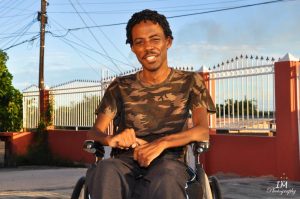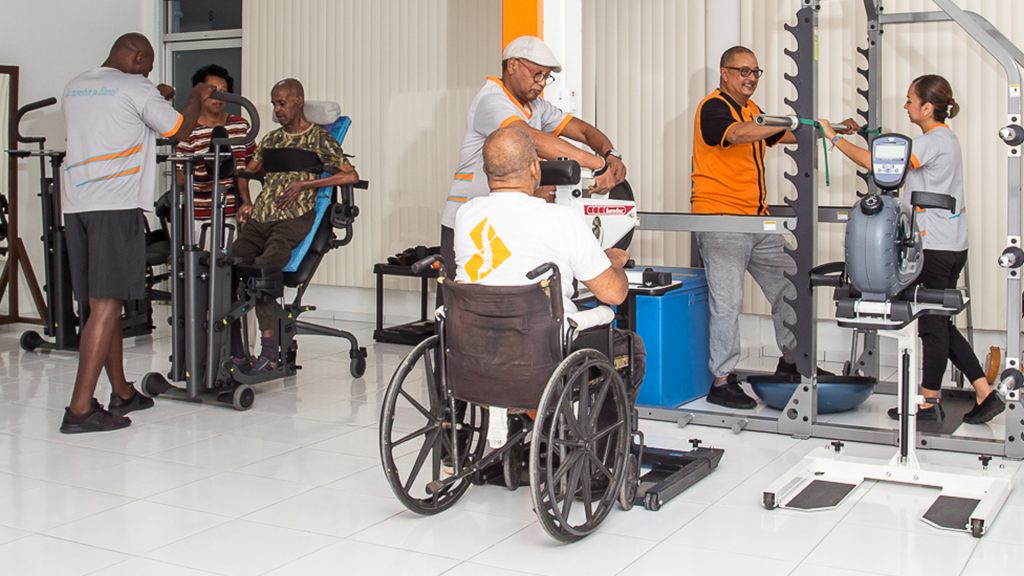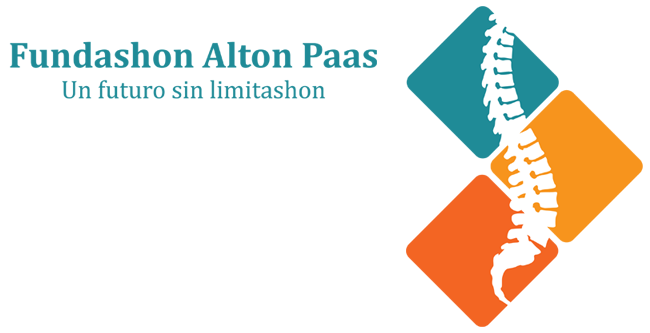
Many people in Curaçao cope with neurological and/or neurosurgical disorders. Common illnesses include strokes, spinal cord injuries and neuro deficits. A largely sick population is at the root of it all, caused by high blood pressure and diabetes.1, 2 It is a growing problem on the island and we are now noticing an increase in youngsters who also face this challenge. This can have a major impact on their lives and those of their loved ones, but it also influences the labor market, which in turn, affects the economy of the island.
The majority of neurological and neurosurgical disorders are chronic in nature, e.g. impairment after a stroke or hemorrhage, Multiple Sclerosis (MS, often in young people), Parkinson’s, spinal cord injury (due to accidents or wear and tear of the spine), neuro deficits (especially diabetes related), etc.
Damage to the brain, spinal cord and/or nerves means that signals from these organs can no longer be passed on to the muscles they control. This results in reduced or no movement of arms, legs, abdominal and/or torso muscles, rib cage muscles and/or diaphragm, intestines and/or bladder. In addition, it can also cause loss of sensation to certain parts of the skin, thereby obstructing signals of pain, temperature, position of limbs, etc., from being properly transmitted to the brain. As a result, people could lose their ability to walk, develop balance problems, be unable to use their hands, be unable to urinate or have difficulty with bowel movement, develop respiratory problems or have insufficient strength to cough, be unable to feel the difference between hot or cold water and they could also lose the ability to feel pain.
Many of these conditions alter patients’ lives in such a way that their daily functioning is impaired or, can even be life-threatening and they must adapt their lives. They often depend on care by an institution or close family members, especially at the beginning or sometimes towards the end of the illness. These patients are more susceptible to health problems such as cystitis, pneumonia, bedsores/ poorly healing wounds, poor overall fitness, blood clotting problems, poor blood circulation, heart and vascular disease, brittle bones, constipation, frequent falls etc.3-10
Most of these patients will have to undergo a rehabilitation process aimed at making them as independent as possible and minimizing problems caused by the disease. An overview is made of the current daily functioning and then a trajectory is put into action to improve their condition and functioning in such a way that they become independent in their self-care or self-reliance. Sometimes they can even reach such a level that they are able to become part of society again and partake in its labor market.
During a rehabilitation period, all facets of general functioning are worked on such as improving mobility, improving balance, psychological support, fitness, bladder training, medication regulation, adjustments to make it possible to live as normal a life as possible, etc. Currently, patients in Curaçao do not have the opportunity to receive chronically supportive training elsewhere to maintain or even further improve their achieved goals once their rehabilitation process is over. While continuous maintenance training has been proven to be important to maintain physical and mental health.
If we look at the functioning of the brain and spinal cord, science has proven several times that these organs have the capacity to reform once they are damaged. Because they are activated, nerve cells can make new connections with each other. This is what we call neuroplasticity. Neuroplasticity can bypass damaged connections and form new connections. This allows the muscles to receive new signals again. Unfortunately, this is a slow process, and can only be accomplished if it is properly stimulated.11 Physical activity seems to have a positive impact on this neuroplasticity. This means that patients receiving physical training show progress with accompanying developments.12
For starters, physical training will improve the patient’s condition (increase in musculature, better lung capacity, better heart pumping capacity, lower blood pressure, weight loss, better cognition), increasing load capacity and endurance, thereby allowing the patient to be able to do more.13, 14 If they can move better, they will be less likely to develop bedsores on their body, they can prevent inflammation, improve blood circulation, their blood pressure will drop, etc. This can ultimately result in fewer deaths, hospitalizations, and protects against other diseases. 15, 16
Secondly, the onset of a chronic disease can greatly affect the mental health of patients. They can become glum and depressed by the drastic change in their way of life and physical disability.3 This affects their daily functioning. By being constantly active in an environment with their peers, people find a great deal of mental support together, motivate each other to move forward. Training also helps to curb negative feelings and fatigue. As a result, in addition to improving function, people can maintain or obtain a better quality of life.17
Unfortunately, we often hear from patients that there is a stagnation in improvement after termination of a rehabilitation process. Residents of Curaçao only sporadically have the means to pay for extended physiotherapy or other supporting physical training institutions such as the Alton Paas Foundation.

Increasingly, multiple scientific studies have shown that it is important for this group of patients to receive physical training, on a long-term and regular basis, to improve their quality of life18 and prevent other conditions. To accomplish this, the American Heart Association has established in their guidelines that following a stroke/and or a hemorrhage, patients should receive physical strength and fitness training several times per week on a chronic basis.19 The same applies to MS and Parkinson’s patients where Kim et al have established guidelines for the degree and frequency of physical strength and fitness training.20 Recently, the same has been published for people with spinal cord injuries.21 There is increasing scientific evidence indicating that continuous physical training provides a better quality of life for patients with neurological and/or neurosurgical disorders. That is why a specifically established institute such as the Alton Paas Foundation needs to receive more support to be able to offer this training structurally for Curaçao and possibly, in the future, for islands in the area as well. It is important that this is done with the help of specialized personnel in order to minimize any negative effects of physical training (e.g. strain) and to provide proper guidance during training.
There is still plenty of room for scientific research in this area and it makes for a great cooperation opportunity between the island’s rehabilitation center and the government to help reduce hospital costs and improve the health of Curaçao citizens.
Written by Dr Elliane Rubio Dos Santos, Neurosurgeon at Curacao Medical Center
Reviewed by Dr Juan Martina & Dr Ayal Zahavi, Rehabilitation Phycisians of Revalidatie Centrum Curacao
References
- Grol ME, Eimers JM, Alberts JF, et al. Alarmingly high prevalence of obesity in Curaçao: data from an interview survey stratified for socioeconomic status. International journal of obesity and related metabolic disorders : journal of the International Association for the Study of Obesity 1997; 21(11): 1002-9.
- Smeijer D, Lourents N, Prada C, Rico R, Gerstenbluth I. Curacao stroke survey: Epidemiology of stroke on the Caribbean Island Curacao from 2010 till 2014. International Journal of Stroke 2014; 9: 170-.
- Stricsek G, Ghobrial G, Wilson J, Theofanis T, Harrop JS. Complications in the Management of Patients with Spine Trauma. Neurosurgery clinics of North America 2017; 28(1): 147-55.
- Hopman MT, Monroe M, Dueck C, Phillips WT, Skinner JS. Blood redistribution and circulatory responses to submaximal arm exercise in persons with spinal cord injury. Scandinavian journal of rehabilitation medicine 1998; 30(3): 167-74.
- Phillips WT, Kiratli BJ, Sarkarati M, et al. Effect of spinal cord injury on the heart and cardiovascular fitness. Current problems in cardiology 1998; 23(11): 641-716.
- Dorton MC, Lucci VM, de Groot S, et al. Evaluation of cardiovascular disease risk in individuals with chronic spinal cord injury. Spinal cord
- Nash MS, Tehranzadeh J, Green BA, Rountree MT, Shea JD. Magnetic resonance imaging of osteonecrosis and osteoarthrosis in exercising quadriplegics and paraplegics. American journal of physical medicine & rehabilitation 1994; 73(3): 184-92.
- Segatore M. The skeleton after spinal cord injury. Part 1. Theoretical aspects. SCI nursing : a publication of the American Association of Spinal Cord Injury Nurses 1995; 12(3): 82-6.
- Popa C, Popa F, Grigorean VT, et al. Vascular dysfunctions following spinal cord injury. Journal of medicine and life 2010; 3(3): 275-85.
- Cardenas DD, Hoffman JM, Kirshblum S, McKinley W. Etiology and incidence of rehospitalization after traumatic spinal cord injury: a multicenter analysis. Archives of physical medicine and rehabilitation 2004; 85(11): 1757-63.
- Hutson TH, Di Giovanni S. The translational landscape in spinal cord injury: focus on neuroplasticity and regeneration. Nature reviews Neurology 2019; 15(12): 732-45.
- Cassilhas RC, Tufik S, de Mello MT. Physical exercise, neuroplasticity, spatial learning and memory. Cellular and molecular life sciences : CMLS 2016; 73(5): 975-83.
- American College of Sports Medicine position stand. The recommended quantity and quality of exercise for developing and maintaining cardiorespiratory and muscular fitness in healthy adults. Medicine and science in sports and exercise 1990; 22(2): 265-74.
- Cassilhas RC, Viana VA, Grassmann V, et al. The impact of resistance exercise on the cognitive function of the elderly. Medicine and science in sports and exercise 2007; 39(8): 1401-7.
- Rimmer JH, Riley B, Creviston T, Nicola T. Exercise training in a predominantly African-American group of stroke survivors. Medicine and science in sports and exercise 2000; 32(12): 1990-6.
- Furlan AD, Irvin E, Munhall C, et al. Rehabilitation service models for people with physical and/or mental disability living in low- and middle-income countries: A systematic review. Journal of rehabilitation medicine 2018; 50(6): 487-98.
- Knobf MT, Thompson AS, Fennie K, Erdos D. The effect of a community-based exercise intervention on symptoms and quality of life. Cancer nursing 2014; 37(2): E43-50.
- Macko RF, Smith GV, Dobrovolny CL, Sorkin JD, Goldberg AP, Silver KH. Treadmill training improves fitness reserve in chronic stroke patients. Archives of physical medicine and rehabilitation 2001; 82(7): 879-84.
- Billinger SA, Arena R, Bernhardt J, et al. Physical activity and exercise recommendations for stroke survivors: a statement for healthcare professionals from the American Heart Association/American Stroke Association. Stroke 2014; 45(8): 2532-53.
- Kim Y, Lai B, Mehta T, et al. Exercise Training Guidelines for Multiple Sclerosis, Stroke, and Parkinson Disease: Rapid Review and Synthesis. American journal of physical medicine & rehabilitation 2019; 98(7): 613-21.
- Martin Ginis KA, van der Scheer JW, Latimer-Cheung AE, et al. Evidence-based scientific exercise guidelines for adults with spinal cord injury: an update and a new guideline. Spinal cord 2018; 56(4): 308-21.
